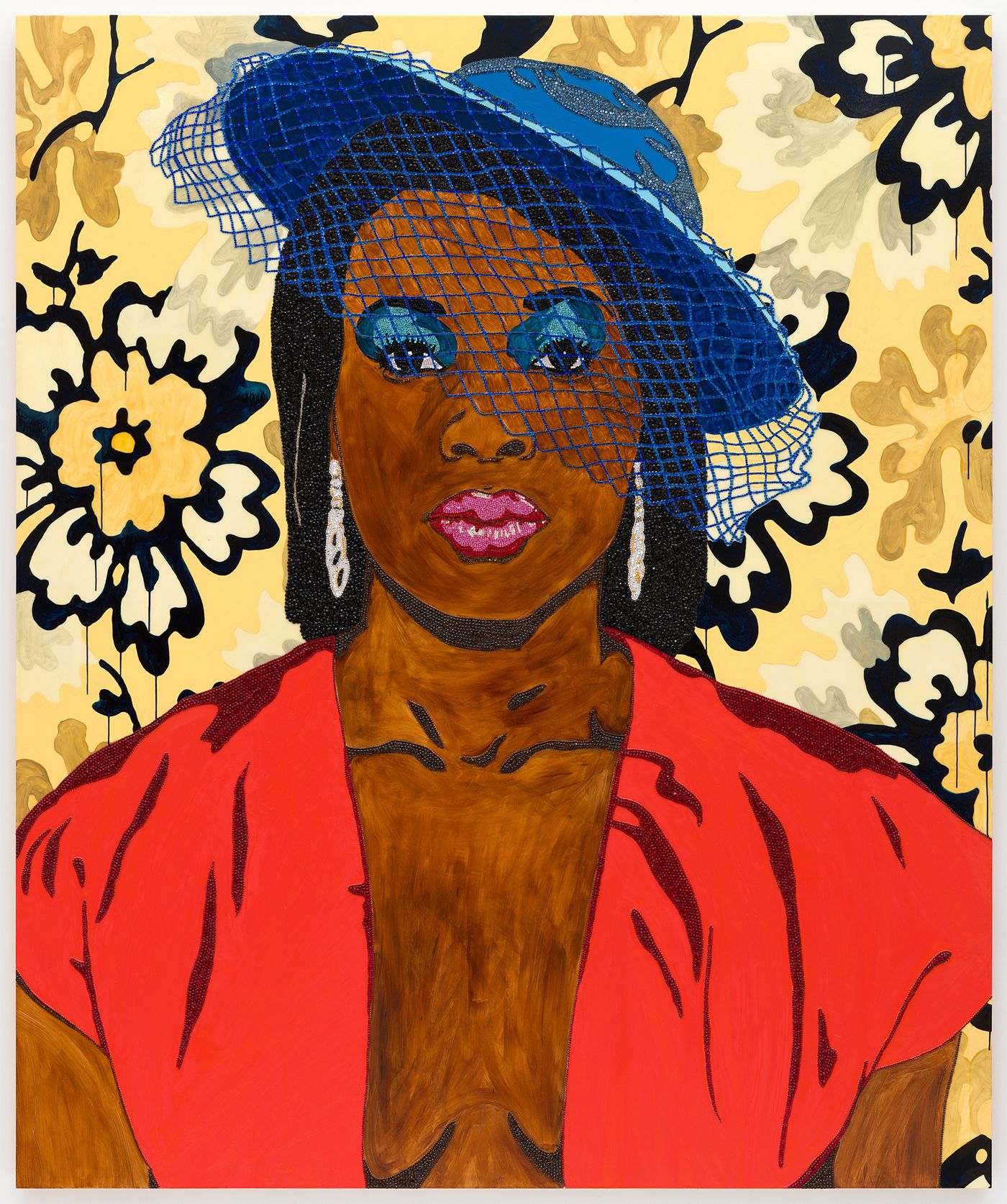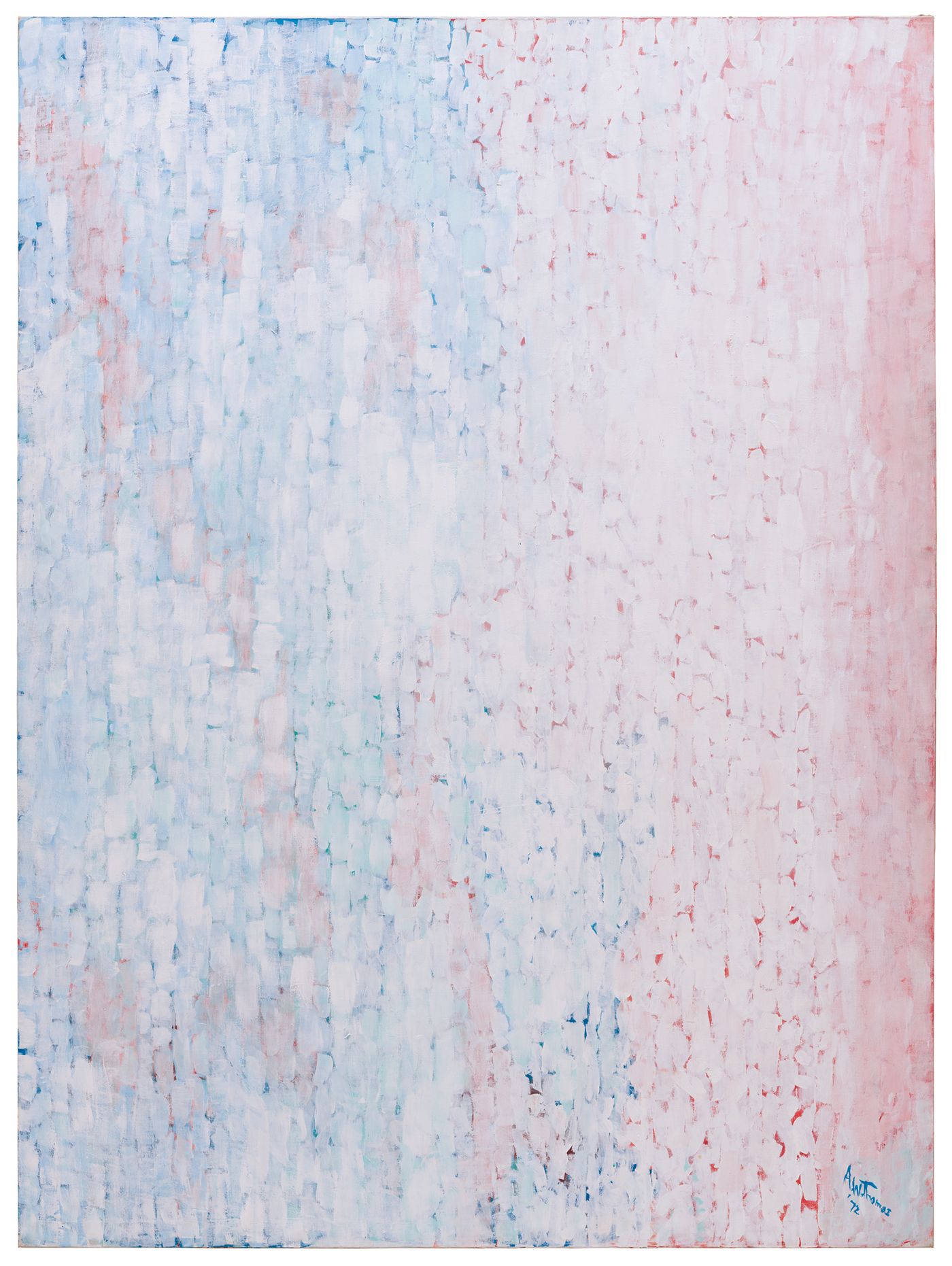The San Francisco Museum of Modern Art is making a strategic effort to diversify its collection following a major bequest from Gap founders Doris and Donald Fisher that many saw as overly skewed toward white male artists. And in so doing, the museum used the proceeds from the sale of a single work by Mark Rothko to fund the purchase of 11 works by 10 modern and contemporary artists who are not white men.
The museum sold Rothko’s Untitled (1960) this spring, and in its place in the permanent collection are works by female and minority artists Rebecca Belmore, Forrest Bess, Frank Bowling, Leonora Carrington, Lygia Clark, Norman Lewis, Barry McGee, Kay Sage, Alma Thomas, and Mickalene Thomas. In addition to the 11 purchases, the remaining proceeds from the Rothko sale will be used to establish an endowment fund for future acquisitions.
As an example, below is a 2011 painting by Brooklyn-based, African American contemporary artist Mickalene Thomas, titled, Qusuquzah, une très belle négresse 1.

And this painting below, also among the acquisitions, is by Guyana-born British artist Frank Bowling, who works in the Rothko-esque oeuvre of Color Field painting.

The work below is a 1972 piece of abstraction by the late African American Expressionist painter Alma Thomas.

"Works by these artists have long been on our wish list. We are thrilled that we can now finally make these acquisitions a reality," says SFMOMA senior curator of painting and sculpture Gary Garrels. "The acquisition of these works, and many more to come, will enable the museum to better and more fully represent the art for our time and bring a much richer array of artists’ voices into the museum."
Museum director Neal Benezra says in a statement, "This is just the beginning of what we will be able to accomplish with this fund, which allows us to broaden the scope of the stories we are able to tell in our galleries." Benezra adds, "With these works, many of which are the first by these extraordinary artists to enter our holdings, we will be able to re-contextualize our permanent collection and the Fisher Collection and expand the art historical narratives we share with our visitors."
SFMOMA reopened in its expanded digs in 2016 — and the expansion itself was driven by the partnership with the Fishers, and the acquisition (really a 100-year loan) of their large collection of modern art. Almost immediately there was discussion within the art world about how the museum would need to counterbalance this acquisition, and the obligation to display a certain percentage of the Fishers' collection at all times, with a growing call to diversify the narrative about art in the 20th and 21st century beyond the big (white) names like Calder, Pollock, Kelly, and Klein, whose work the Fishers preferred to collect.
The new group of acquisitions includes two sculptures by Brazilian artist Lygia Clark: Bicho Pássaro do Espaço (Critter Bird in Space), and its accompanying Estudo para Bicho Pássaro do Espaço (maquette). The works are both manipulable sculptures made of steel plates connected by hinges, which are meant to be reconfigured by the viewer into hundreds of possible shapes. Clark passed away in 1988, and the museum writes, "Since her death... Clark has been celebrated as one of the most radical artists of the postwar period."
Another new work the museum purchased is an early piece by Bay Area street artist Barry McGee. The untitled 1993 piece, "With its loose, spray-painted imagery, white drips and red background... offers an exceptional snapshot of the artist’s style as it came into being and retains a strong link to San Francisco’s graffiti underground," the museum says.
All 11 new works will go on display alongside other pieces from the permanent collection in late August.
Related: Go See This Thing: The Stunning New 100-Foot-Wide Digital Mural Of San Francisco At SFMOMA

